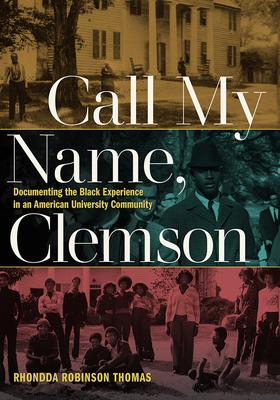Between 1890 and 1915, a predominately African American state convict crew built Clemson University on John C. Calhoun's Fort Hill Plantation in upstate South Carolina. Calhoun's plantation house still sits in the middle of campus. From the establishment of the plantation in 1825 through the integration of Clemson in 1963, African Americans have played a pivotal role in sustaining the land and the university. Yet their stories and contributions are largely omitted from Clemson's public history.
This book traces "Call My Name: African Americans in Early Clemson University History," a Clemson English professor's public history project that helped convince the university to reexamine and reconceptualize the institution's complete and complex story from the origins of its land as Cherokee territory to its transformation into an increasingly diverse higher-education institution in the twenty-first century. Threading together scenes of communal history and conversation, student protests, white supremacist terrorism, and personal and institutional reckoning with Clemson's past, this story helps us better understand the inextricable link between the history and legacies of slavery and the development of higher education institutions in America.
